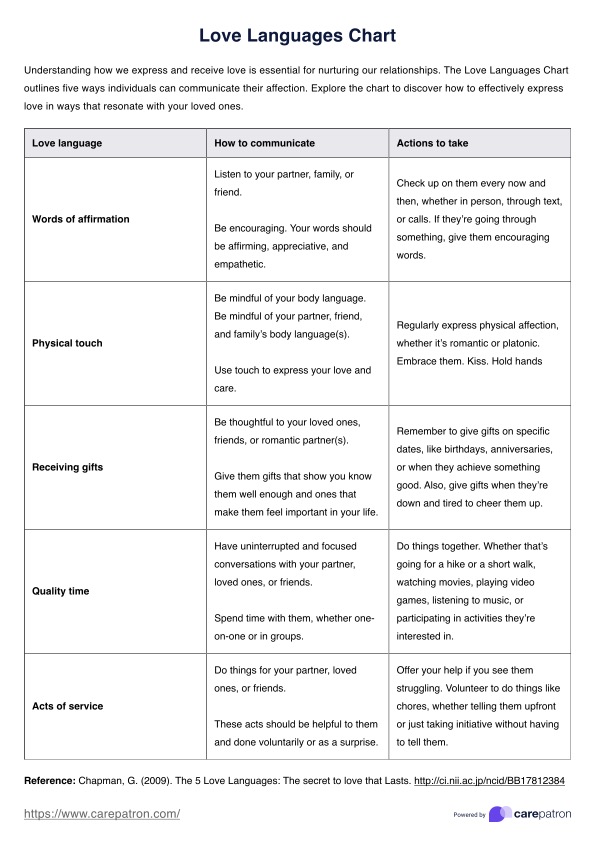The five love languages are words of affirmation, quality time, receiving gifts, acts of service, and physical touch. Each language represents a different way of expressing and experiencing love in relationships.

Use our Love Languages Chart to educate clients and help improve communication in their relationships. It comes with a test as well!
The five love languages are words of affirmation, quality time, receiving gifts, acts of service, and physical touch. Each language represents a different way of expressing and experiencing love in relationships.
Like men, women's love languages can vary widely. However, many women often value quality time and words of affirmation, appreciating meaningful conversations and verbal expressions of love.
While love languages vary significantly among individuals, many men appreciate acts of service and physical touch. However, it's important to recognize that each person has unique preferences.
EHR and practice management software
*No credit card required
Free
$0/usd
Unlimited clients
Telehealth
1GB of storage
Client portal text
Automated billing and online payments